
Rediscovering Japan

Rediscovering Japan
Travel (Nagasaki Prefecture (Ohno/Shitsu))

by tomizuta
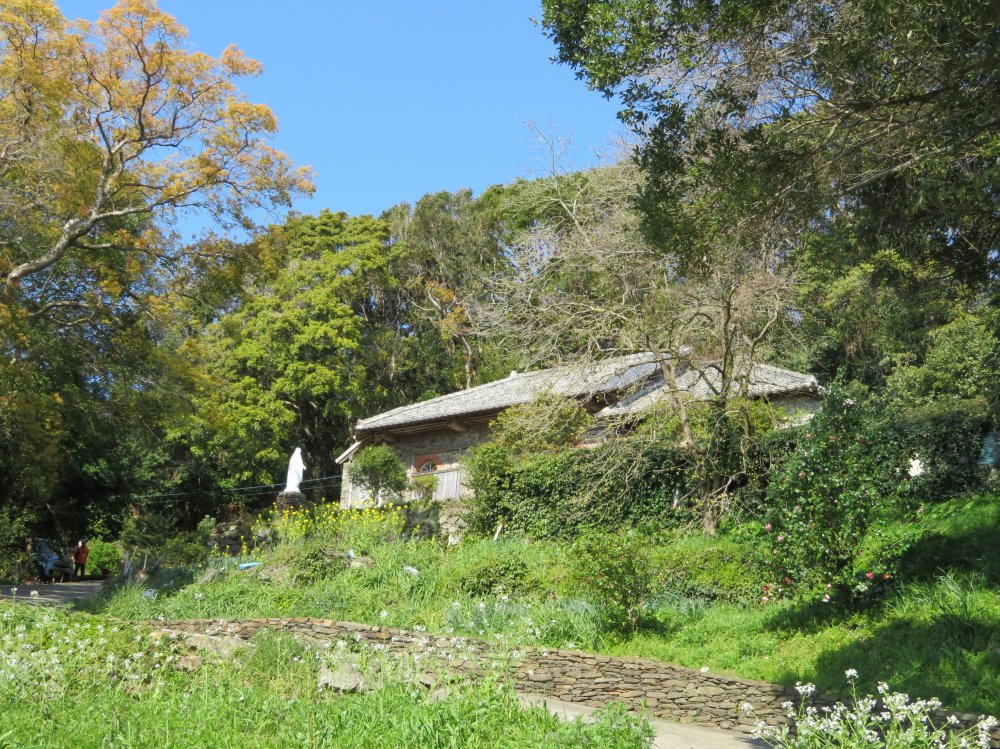
Ohno area in northern Nagasaki City is one of the twelve components of the 2018 World Heritage designation “Hidden Christian Sites in the Nagasaki Region”. It was a pleasant walk uphill towards Ohno Church built in 1893.
In early April, 2019, we visited Nagasaki Prefecture for four days. This was my first visit to the prefecture. There is so much to see, but the locations are quite scattered. So on this occasion we concentrated on the cities of Nagasaki and Shimabara. We landed at Nagasaki Airport at about 1pm. We had a quick lunch at the airport restaurant, picked up our rent-a-car and drove to the Ohno and Shitsu areas in northern Nagasaki City both of which are part of the twelve components of the 2018 World Heritage designation “Hidden Christian Sites in the Nagasaki Region”. Nagasaki Airport is located on an island in Ohmura Bay, close to central Ohmura City. From there it was a sixty kilometers drive north west to our first destination, Ohno area. The twelve components of the World Heritage designation are components that provide testimony to the events that led to the creation of Hidden Christians, how they preserved their belief and tradition during close to three hundred years of prohibition of Christianity from the late 16th century to the latter half of the 19th century, and how the tradition transformed after the lift of the ban.
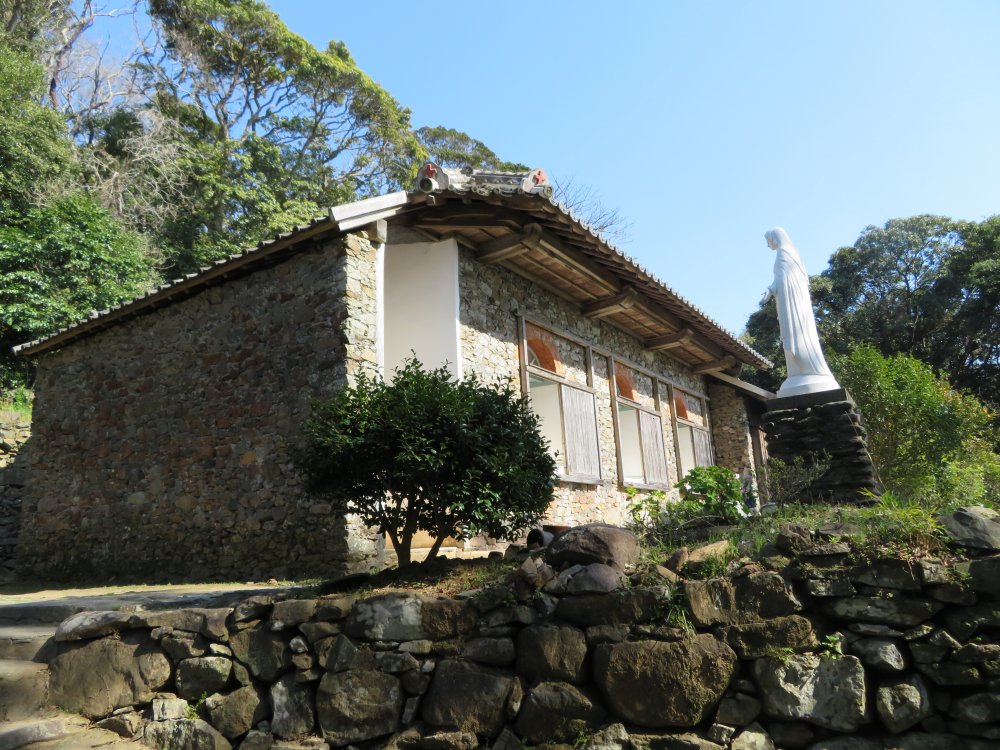
The church brochure says that the church walls are so-called “de Rotz walls” which was stronger against wind and rain compared with the traditional local walls that used red soil and straws to fasten the stones.
We first visited the Ohno Catholic Church. The church was designed and constructed by Father de Rotz in 1893 for the twenty six families of Hidden Christians of Ohno that had converted to Catholics after the lift of the ban on Christianity in 1873. It was a pleasant walk up about five minutes from the car park not far from the national road. The church is small but very pretty and well preserved. The church brochure says that the church walls are so-called “de Rotz walls” which was a stronger wall against wind and rain that Father de Rotz introduced, compared with the traditional local walls that used red soil and straws to fasten the stones. The stones used here are local basalt. Although only one misa is held in a year, luckily the church was open and we were able to view the inside. It certainly was worth a visit.
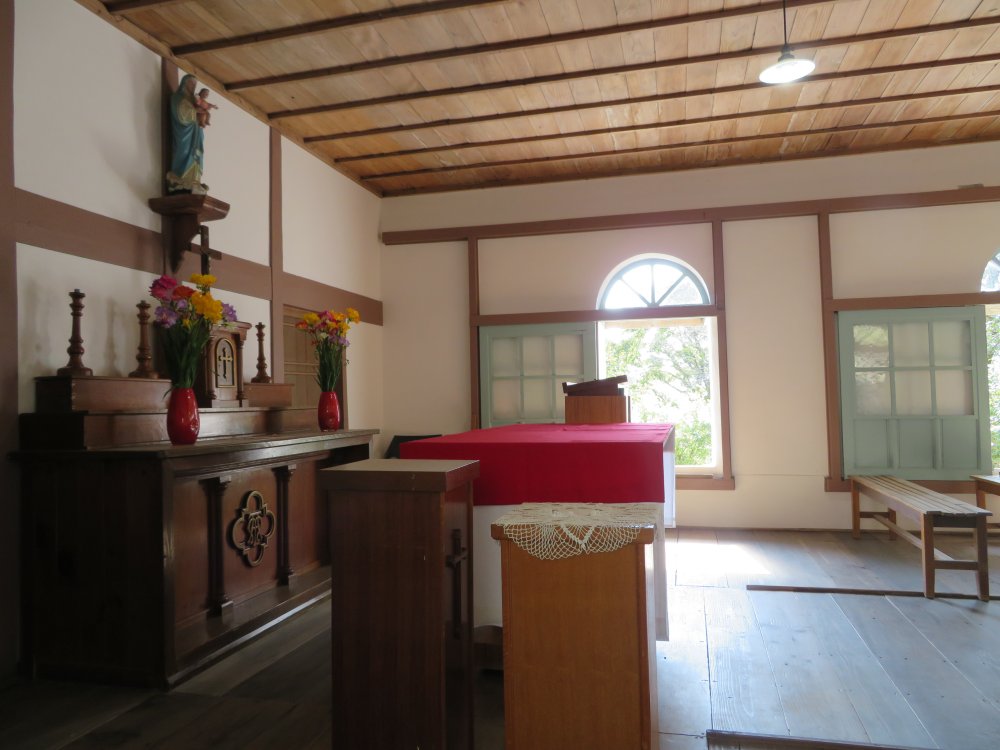
A peak of the altar from outside. It's such a charming church.
The Hidden Christians of Nagasaki avoided persecution by outwardly behaving
like Buddhists and Shinto believers. Part of the testimony of Hidden Christians
is related to this, such as Maria Kannon (Mary taking the form of a benevolent
Buddhist figure (kannonbosatsu) that helps people) or concealed Christian
objects or names in Shinto shrines. We learned that there were three such
Shinto shrines in the Ohno district. We visited one of them, Ohno-jinja
(Ohno Shrine) which was the closest from the national road. I went up the
steps from the national road, crossed a lane to enter the shrine. It looked
like a perfectly ordinary Shinto temple, but I understand that the shinkan
(chief priest) was the head of the Hidden Christians and the shrine itself
was a disguised church.
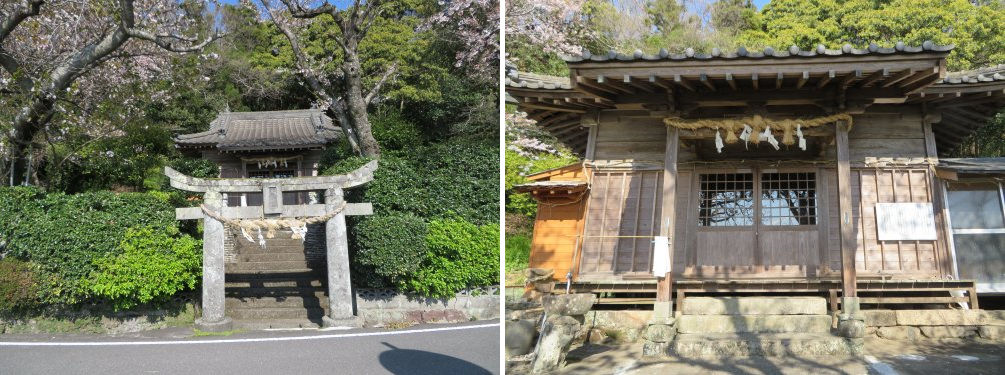
Ohno-jinja (Ohno Shrine) looks like a perfectly ordinary Shinto shrine, but I understand was a disguised church.
We drove a couple of kilometers towards Shitsu village area. This is another former Hidden Christian village and one of the twelve components of the World Heritage designation. There was a sign post on the national road pointing Shitsu Church. There was a car park just above the national road by the Sotome Museum of History and Folklore. We started to walk from there to Shitsu Church, but noticing the uphill leading to the church, we decided to drive there. The roads are narrow, but we managed to park inside the church premises. The church constructed by Father de Rotz in 1882 is much larger and grander than Ohno Church. We went inside the church. The interior looks like any other church but it is without stained glass windows and has a flat ceiling, which according to the church brochure gives a warm feeling of a traditional Japanese architecture.
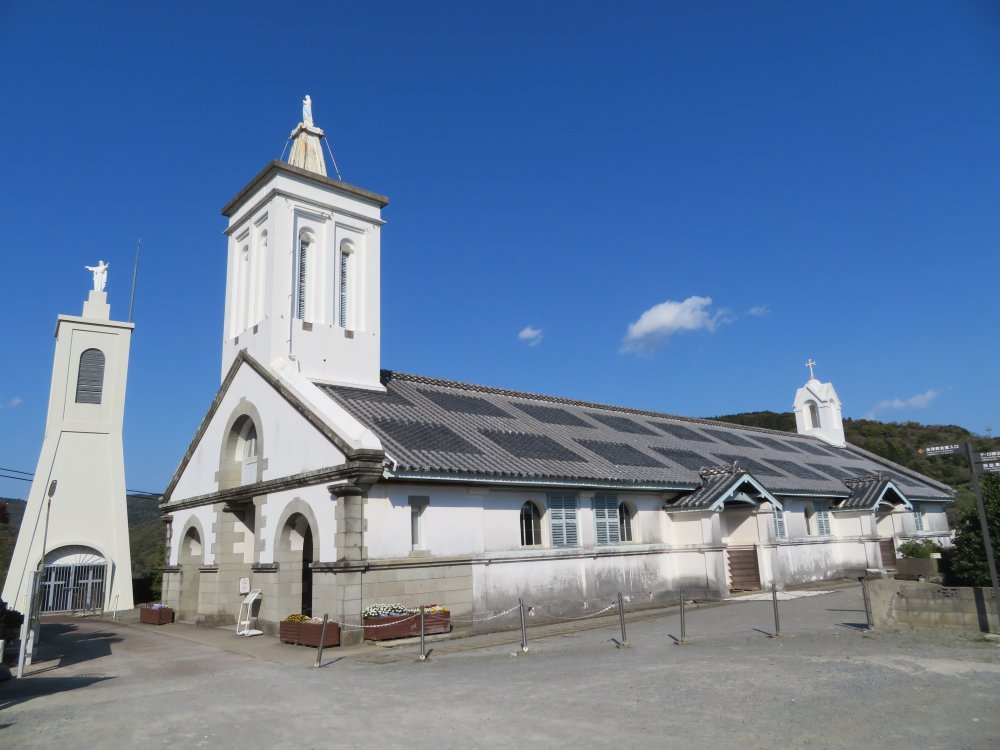
Shitsu Church constructed by Father de Rotz in 1882 is much larger and grander than Ohno Church.
Father de Rotz Memorial Museum is located half way between Shitsu Church and the Sotome Museum of History and Folklore. I learned a lot about the life and the contribution Father de Rotz made to the villagers suffering from poverty. There are numerous displays of his kits and tools as a doctor, builder, engineer etc. As a missionary he must have been exceptionally multi-skilled. But what impressed me most was his devotion to the welfare of the Sotome area (which includes the villages of Ohno, Shitsu, Kurosaki and Kounoura) for which he was responsible. During his thirty five years in Sotome until his death in 1914, he opened many factories producing various goods ranging from pastas to sardine fish nets as well as running a training center for women. The museum building was formerly the sardine fish net factory. There is a modest joint admission fee of 300 yen to this museum and the Sotome Museum of History and Folklore.
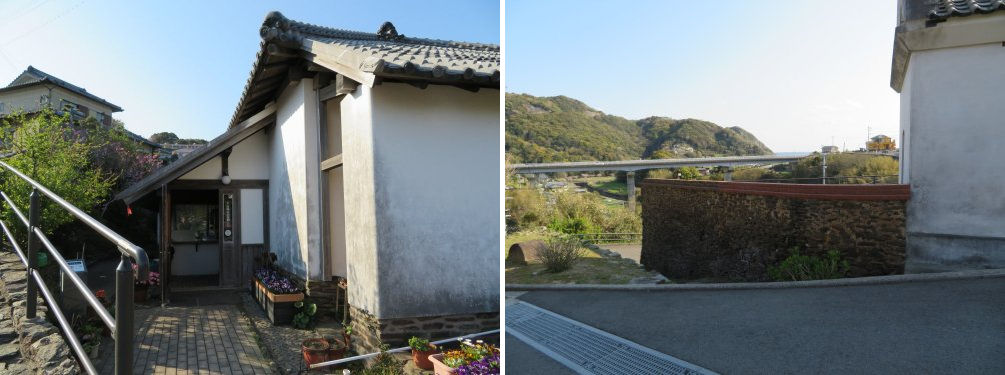
(left) The entrance to Father de Rotz Memorial Museum. The museum building was formerly the sardine fish net factory. (right) The de Rotz wall of a former pasta factory close to Father de Rotz Memorial Museum.
We then paid a brief visit to the Sotome Museum of History and Folklore. The displays are archaeological finds of the area, some additional exhibits related to the Hidden Christians and festival floats. We quickly browsed the displays and left for our next visit to Kurosaki Church further south.
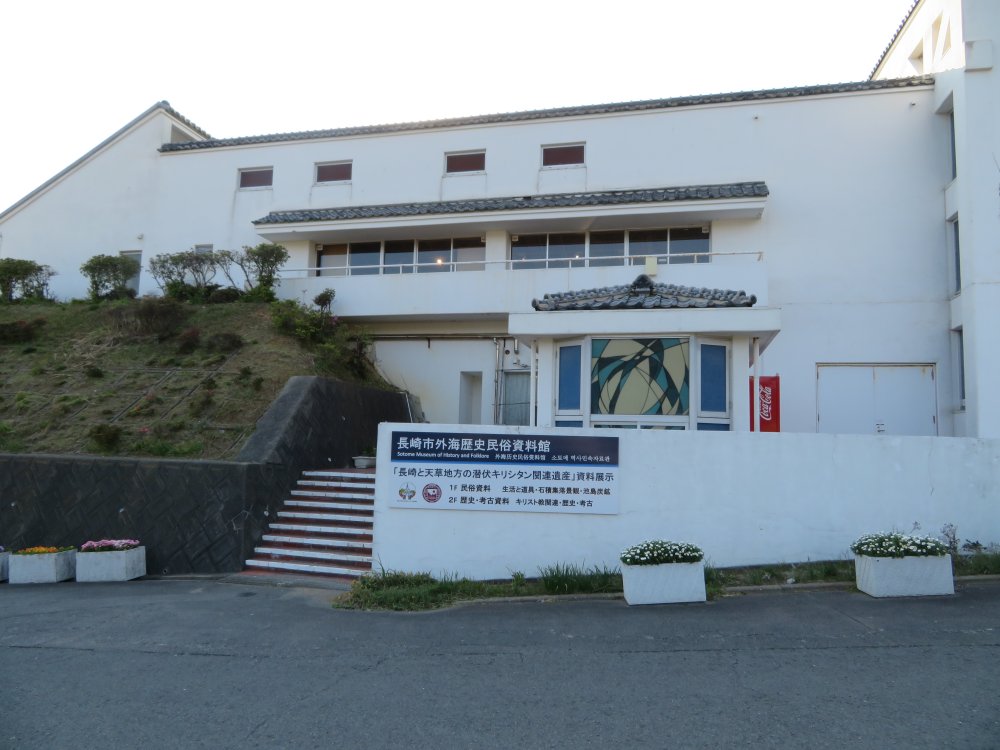
We paid a brief visit to the Sotome Museum of History and Folklore.
This is a newer and larger red brick Romanesque church located just above the national road. I understand the construction was initiated by Father de Rotz in 1899 but terminated shortly for lack of funds. It was finally completed in 1920. Kurosaki is not included in the World Heritage designation. It was the site of Shuusaku Endo’s novel “Chinmoku (silence)”. We briefly entered the church and left for our hotel in central Nagasaki City.
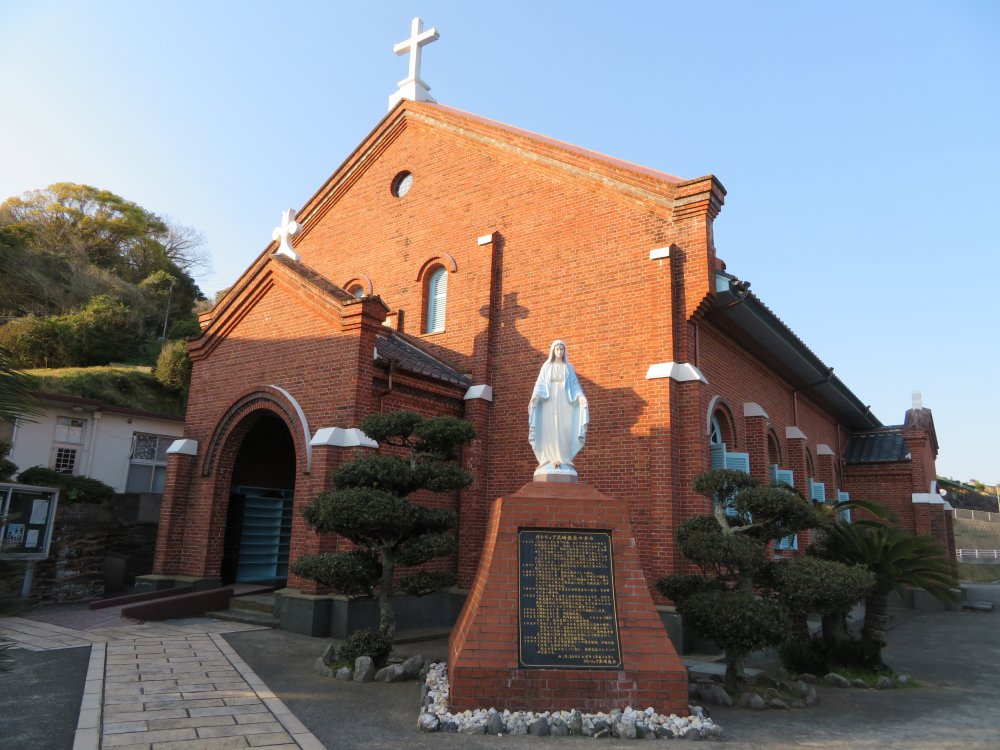
Kurosaki Chirch is a newer and larger red brick Romanesque church located just above the national road.